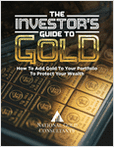What You Need to Know
- Sitting on the sidelines in cash can mean loss of opportunity costs and buying power.
- With interest rates rising, many bonds are more attractive now that they have higher yields.
- Now may be the time to deploy cash back into areas of the stock market that are overly discounted.
A natural response to market volatility is to move to the sidelines until it calms down. With stock and bond markets showing double-digit losses so far in 2022 and the S&P 500 reaching bear market territory on May 20 (down 20% from its peak), some investors are looking at cash as a safe haven. While it is true that cash is risk-free from a volatility standpoint, sitting on the sidelines in cash poses its own risks, primarily loss of opportunity costs and loss of purchasing power.
Cash or savings accounts yielding less than 1% when inflation is above 8% means your real return on cash is negative 7%. That’s because the purchasing power of your cash has eroded as the price of things you want to buy has gone up due to inflation. Moving to cash also removes the opportunity to participate in the markets when they eventually rebound.
So, what should investors do? If you have already moved to cash, look for entry points to get back in. This could be during market dips or dollar cost averaging back into the markets over a set period of time, so you don’t have to worry about picking a single day to invest.
If investors sold bonds because they dipped, many of those bonds are looking more attractive now that they have higher yields and a better risk/return profile than a few months ago. Floating rate bonds are also attractive in a rising rate environment as they have a short duration (less sensitive to interest rates) and automatically adjust to higher rates.









 May 31, 2022 at 05:26 PM
May 31, 2022 at 05:26 PM











